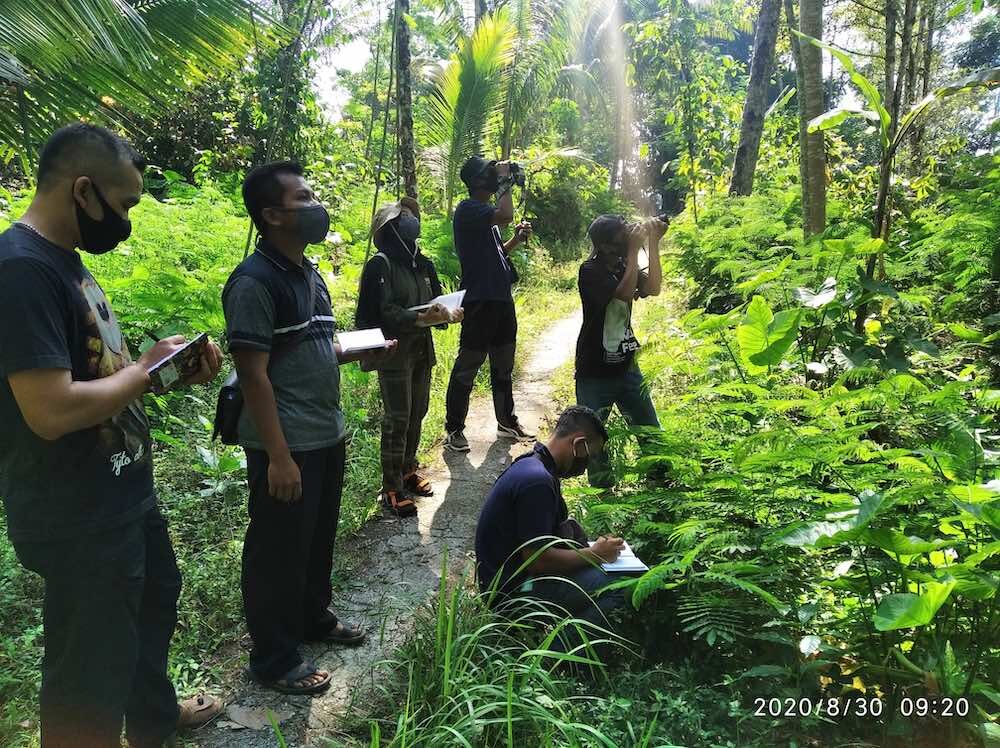The Egyptian Vulture (Neophron percnopterus), distinctive with its white body, black flight feathers and yellow facial skin, is globally Endangered having experienced severe declines throughout its range, including in India, Africa and Europe. Satellite tracking has been an integral part of identifying the causes for declines in the migratory populations in Europe and Africa, and consequently where conservation efforts should be focussed to halt the decline of “the white scavenger vulture”. The situation, however, is much less clear in central Asia where its migratory populations, numbering an estimated 700–1,300 pairs, are also thought to be declining. There are few data available on population status or trends and nothing is known about their migration routes or wintering sites. While some threats, such as electrocution, are known on the breeding grounds, little is known about the relative importance of threats, their demographic impacts and how these vary during migration.
The recent Convention on Migratory Species Multi-species Action Plan to Conserve African-Eurasian Vultures identified these critical gaps in knowledge as a key priority needing to be addressed. The Central Asian Vultures Project (www.CentralAsianVultures.org) aims to tackle this by satellite tracking Egyptian Vultures originating from the Uzbekistan population where there is estimated to be only 135 breeding pairs and the species is listed in the National Red Data Book.
Uzbekistan is in the middle of the central Asian-Indian flyway with many migrants funnelled through it because of the Caspian Sea in the west and the Hindu Kush range in the east. This flyway ends with Iraq in the west and Pakistan and the Indian subcontinent in the east. The majority of Uzbekistan is covered in desert, with the Kyzylkum Desert at its centre. The semi-arid region is predominantly flat, but does provide some nesting habitat for the Egyptian Vulture in the form of low-lying hills and cliffs along wadi systems. In August 2021, the field team visited three different nests in the regions of Ayakaghytma and Bukantau in central Kyzylkum and satellite tagged four juvenile Egyptian Vultures (read about the birds here). Of the four birds, three transmitted GPS data allowing their movements to be tracked for the first time in Asia.
All three birds started migration from Uzbekistan between 5–15th September 2021. Each bird took a different route with two (Arys & Anya) migrating via Turkmenistan, Afghanistan and Pakistan and ultimately wintering in India (Rajasthan and Haryana). The third bird, Timur, took a very different route making a long journey with several stops through Turkmenistan, Iran, Iraq, Kuwait, Saudi Arabia and finally arriving in Yemen in late November 2021 (Fig. 1). You can read about Timur’s journey to the Middle East in more detail on the OSME Blog.
Figure 1. Autumn migration routes of three Egyptian Vultures from Uzbekistan.
Anya followed a traditional route south from Uzbekistan (Fig. 1) and made a fairly direct migration south, avoiding mountain crossings, until she reached the Rann of Kutch, north of the Indus near Karachi in Pakistan. The Rann of Kutch (which actually spans parts of Pakistan and India) is known for its populations of Egyptian Vultures. Anya, however, only remained here for a few weeks before crossing the Indus and entering the Thar Desert in Rajasthan, India, where she has stayed in the deserts west of Barmer (Fig. 2). Judging from satellite photos, she has largely remained in remote areas and not utilised human refuse sites or dumps.
Figure 2. Wintering site movements of the Egyptian Vulture, Anya, through Pakistan and India, remaining in the Thar Desert. Most recent point (3rd Jan 2022) shown with the dropped pin.
In contrast, Arys has shown quite a different migratory behaviour. Arys’s route was much farther east and took him right over the Hindu Kush Mountain range in Afghanistan/Pakistan (Fig. 1). He then followed the ridge of the Sulaiman range in Pakistan all the way south, after which he directly crossed the Indus south into the Thar Desert. Once in India, Arys has used man-made habitat several times, in the forms of slaughter areas and carcass dumps. Notably, his first arrival point in India, Bhadriya, was near a livestock facility, after which he moved east to the town of Bikaner. Bikaner is famous for its carcass dump which attracts thousands of vultures and Steppe Eagles (Aquila nipalensis) during the winter months. Arys spent several weeks at this site before moving east again where he has spent more than a month just south of New Delhi. He is a real tourist, as by the end of December he had visited all three cities making up the famous Golden Triangle; New Delhi, Jaipur and Agra. On his journey he flew over the India Gate in New Delhi (Fig. 4) and within 200 m of the world famous Taj Mahal (Fig. 5) where he remains until the time of writing.
Figure 3. Wintering site movements of the Egyptian Vulture, Arys, through India, moving from the carcass dump in Bikaner to New Dehli and Agra. Most recent point (3rd Jan 2022) shown with the dropped pin.
Figure 4. The yellow line shows the route and altitude of Arys as he flew past India Gate in New Delhi.
Figure 5. The yellow line shows the route and altitude of Arys as he flew past the Taj Mahal in December 2021.
These results confirmed what we had expected, namely that the migratory populations in Central Asia would join resident Egyptian Vultures populations in the Indian sub-continent during winter. However, we did not expect the birds to migrate to Yemen in the Middle East. This establishes for the first time that the central Asian populations show connectivity to the European/Balkan, Arabian and Oriental Asian populations. Migration in European populations has been shown to be particularly dangerous with juvenile migrants susceptible to a high mortality from a range of threats, including drowning, hunting, poisoning and electrocution. These threats mainly exist in Africa and crossing the Mediterranean, but also in Yemen. In contrast, accidental poisoning by diclofenac and other veterinary drugs is the main threat in India and is potentially ongoing although much effort is being put into actively tackling poisoning in Asian countries as it is a recognised problem.
Here we have only tracked three individuals and more should be tracked to confirm the relative frequencies of individuals wintering in these different regions. The picture is nonetheless complex and interesting. In 2022, we aim to track more individuals to improve the knowledge of the routes. You will be able to follow the project updates at www.CentralAsianVultures.org.
This project (OBC ref: P1410) is run by Dr Robert (John) Burnside (University of East Anglia), Vladimir Dobrev (Bulgarian Society for Protection of Birds) and Anna Ten and Valentin Soldatov (Institute of Zoology, Uzbekistan). Funding and support for the project is provided by OBC, Ornithological Society of the Middle-east (OSME) and the Hawk Conservancy.
If you are not already a member of the Oriental Bird Club, please consider joining the Club to support our vital conservation work in Asia—as an OBC member, each year you will also receive two issues of BirdingASIA and one issue of the Journal of Asian Ornithology.
Video of the Egyptian Vulture migrations.


























